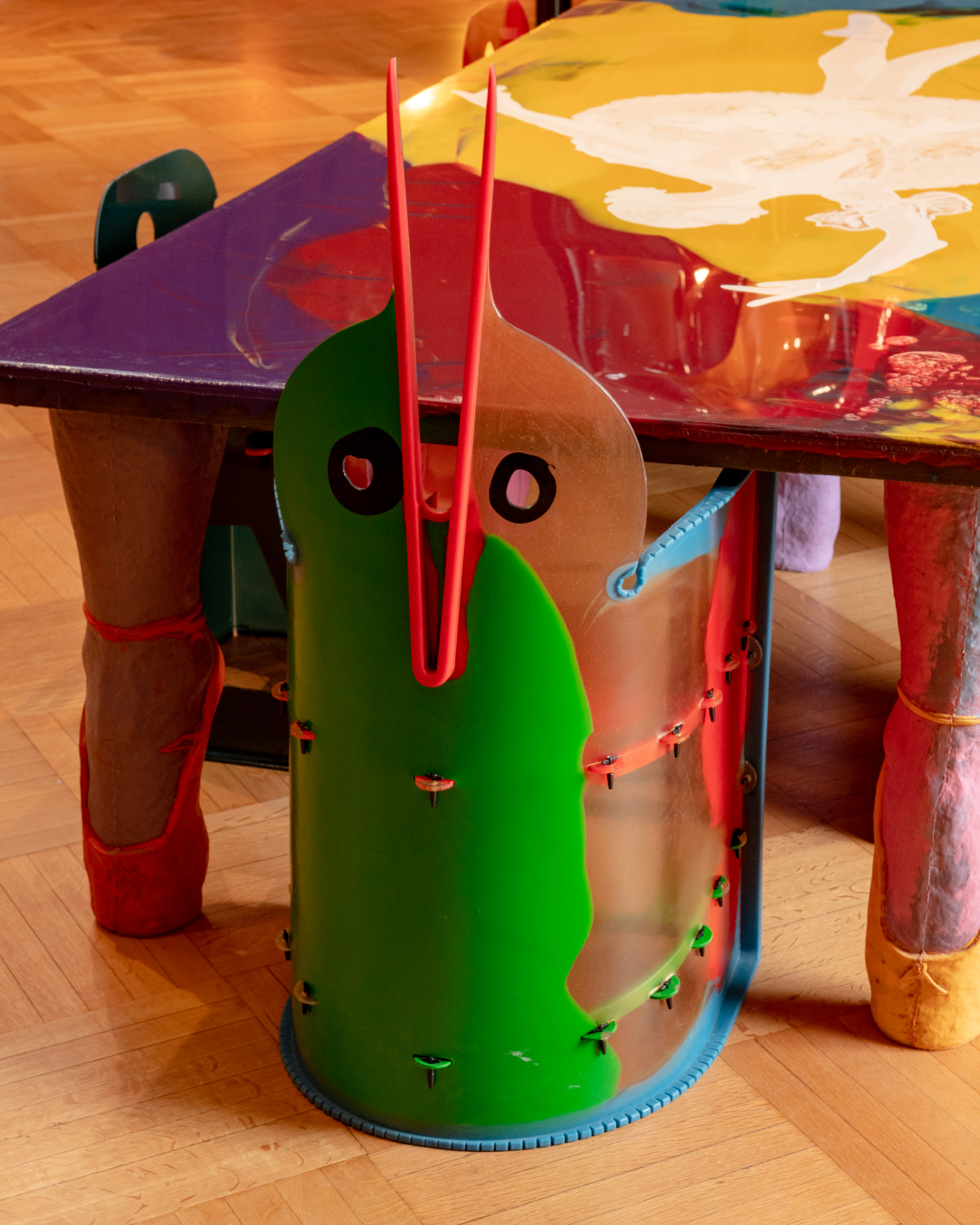
No More Silent Objects - Gaetano Pesce
September 2021 - Salon 94 Design
Gaetano Pesce, a true Gesamtkunstwerk artist working with all elements of art and design ranging from architecture to ornamentation and furniture. Since the 1960’s Pesce has been working primarily with resin, a progressive material which continues to elevate his practice as it has evolved over the last 50 years. Resin begins clear and viscous, and is transformed into object as Pesce adds color, form, rigidity, and content. Unrestricted by the properties of resin, Pesce has communicated narratives though his work, and has implied his own ideas and identity though these objects. The Nobody’s Perfect Chairs begin as liquid resin poured into two flat moulds, it cures into a flexible two dimensional form, which is folded and pinned into place to become functional. The title and various portrait styles of this chair suggest that each user is unique, that there is no singular form or shape that encompasses everyone.
September 2021 - Salon 94 Design
Gaetano Pesce, a true Gesamtkunstwerk artist working with all elements of art and design ranging from architecture to ornamentation and furniture. Since the 1960’s Pesce has been working primarily with resin, a progressive material which continues to elevate his practice as it has evolved over the last 50 years. Resin begins clear and viscous, and is transformed into object as Pesce adds color, form, rigidity, and content. Unrestricted by the properties of resin, Pesce has communicated narratives though his work, and has implied his own ideas and identity though these objects. The Nobody’s Perfect Chairs begin as liquid resin poured into two flat moulds, it cures into a flexible two dimensional form, which is folded and pinned into place to become functional. The title and various portrait styles of this chair suggest that each user is unique, that there is no singular form or shape that encompasses everyone.


“Long gone is the time of mute objects and decorative architecture. Today they should express the places where they are built on, the identity, culture, geography, and should no longer transport "the same" to different locations. In general, architecture is no longer made with abstract forms, but with buildings whose volumes express recognizable figures. So too the objects, they express not only functionality but also the reality from which they derive. They can suggest a political position, a religious belief, a philosophical thought, or the profound thoughts of those who design them. All this with figurative forms that communicate. The new creativity is done with all this: it no longer repeats to please a foolish market, or to align itself with a now outdated International Style.”— Gaetano Pesce, August 2021




In post-war Italy, designers, artist, and architects made objects and wrote manifestos to state their intent in suppressing a fascist history and capitalism as it was growing in the United States and elsewhere. They also combated the ever overbearing rules of modernism. The International Style’s intention in the 1920s was to create a uniformly understood symbol of progress though glass windows, steel beams, and horizontal lines. Though idyllic the International Style also implied one identity. Gaetano Pesce and many others working though the 1960s and 70s fought this with colorful, emotional and figurative work. Pesce’s Elephant Lamps speak to the spirit of the animal which connotes a protective intelligent power that is also long lasting and empathetic, and his Ballet Table rests on flexible legs to move like a ballerina. Pesce’s work is never static, and uncomplicated, his language pulls from the everyday, and his philosophy is clear: objects wherever they live, in domesticity or in public should keep the user engaged, neither the user or the chair will be silent.
Text and photography courtesy of Salon 94 Design.
Installation photography by Sean Davidson.
